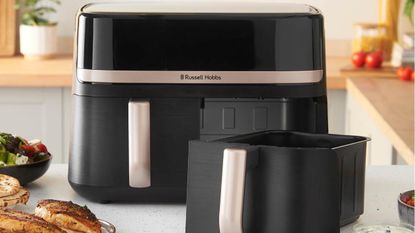Kitchen
The latest Kitchen breaking news, comment, reviews and features from the experts at T3
Explore Kitchen
-
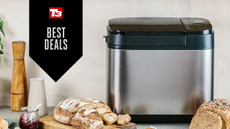
There's one kitchen gadget I’m relying on for my New Year’s resolution – and it’s 20% off right now
Could this inspire you as well?
By Lizzie Wilmot Published
-

I’m an appliance expert – here are 7 kitchen trends I hope to see in 2026
Are AI kitchens here to stay? Here are my kitchen trend predictions for 2026
By Bethan Morgan Published
-

3 must-have kitchen appliances to look out for in the Boxing Day sales
Missed out at Christmas? All is not lost
By Lizzie Wilmot Published
-

This Jamie Oliver air fryer hack will massively upgrade your Christmas leftovers
Take your Boxing Day leftovers to the next level with this Jamie Oliver-recommended hack
By Bethan Morgan Published
-

3 Christmas foods you should never cook in an air fryer
Just because you can cook Christmas lunch in an air fryer, doesn’t mean you should…
By Bethan Morgan Published
-

Le Creuset launches rainbow gift sets right before Christmas – I wish I’d known about them sooner!
Le Creuset’s new rainbow gift sets are on my Christmas wishlist
By Bethan Morgan Published
-

4 smart cooking tech must-haves for a stress-free Christmas dinner
Getting the perfect turkey doesn't have to be hard
By Max Slater-Robins Published
-
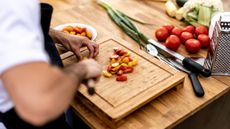
11 best Christmas gift ideas for budding chefs and home cooks
Upgrade your kitchen with these luxury Christmas gifts
By Bethan Morgan Published
-

15 best Christmas gift ideas for coffee lovers, baristas and latte art beginners
These are the best gifts to give someone who loves all things coffee
By Bethan Morgan Published
-

15 retro kitchen appliances that would make the perfect gift this Christmas
Some are even still discounted after Black Friday!
By Lizzie Wilmot Published
-

Salter just dropped a new kitchen appliance range – and it has every gadget you could possibly imagine
Introducing the Alchemy collection...
By Lizzie Wilmot Published
-

This Tower air fryer uses AI to calculate cooking temperature – and it’s super affordable
Tower’s new AIRX air fryer has built-in AI that’s genuinely useful
By Bethan Morgan Published
-

Cuisinart Blast & Go Portable Blender review: easy, convenient and surprisingly premium
Here's my take on Cuisinart's latest kitchen gadget
By Lizzie Wilmot Published
-

3 best air fryer launches from 2025 you should know about – if you don't already
My favourite air fryers from the year, and why they deserve a place in your kitchen
By Bethan Morgan Published
-
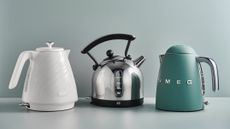
Best kettle 2025: the highest-ranking multi-temp and standard models
The ultimate vessel for a perfect cuppa
By Lizzie Wilmot Last updated
-

Best bean-to-cup coffee machine 2026: top picks for coffee lovers
Find the best bean-to-cup coffee machines that incorporate a grinder, espresso maker and milk frother in one handy box
By Bethan Morgan Last updated
-

Xiaomi’s new smart fridge has some brilliant features – and it could shape the future of kitchen appliances
It's also incredibly affordable
By Lizzie Wilmot Published
-

Best electric barbecue 2026: indoor and outdoor grills for all-year-round cooking
Find the best all-in-one electric barbecues and grills with plug-and-play convenience
By Bethan Morgan Last updated
-

Pantone’s 2026 Colour of the Year is underwhelming, but these appliances can incorporate it in your kitchen
Is anyone else deeply disappointed by the 2026 Pantone Colour of the Year?!
By Bethan Morgan Published
-
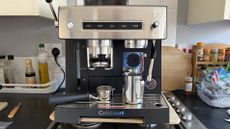
Cuisinart Grind, Tamp and Brew Espresso machine review: A premium experience for coffee buffs
Cuisinart’s high-end espresso model offers full control from bean to cup for hot or iced barista-style drinks
By Rob Clymo Published
-

3 kitchen appliances you shouldn't leave plugged in at night, according to an expert
A little caution now can save a big headache later
By Lizzie Wilmot Published
-

Calling all baristas! Victorinox just made a Swiss Army Knife for your coffee machine
I’ve just found my new favourite coffee machine accessory
By Bethan Morgan Published
-

3 kitchen appliances you should never plug into an extension lead, according to an expert
It's best to be safe than sorry
By Lizzie Wilmot Published
-

Lidl’s new air fryer is a Ninja Max dupe – and it’s a third of the price
Lidl takes on Ninja with its latest in-store air fryers
By Bethan Morgan Published
-

M&S partners with Tom Kerridge on cookware collection – and you won’t believe the price
The M&S x Tom Kerridge is exactly what I want in my kitchen
By Bethan Morgan Published
-

AeroPress debuts first-ever coffee grinder – and it’s something fans have been waiting for
AeroPress has seriously surprised me with its latest coffee launch
By Bethan Morgan Last updated
-

Le Creuset’s Christmas collection is here – these are my favourite holly-inspired pieces
Le Creuset’s Christmas collection drops early and it has me feeling festive
By Bethan Morgan Published
-

KitchenAid Pure Power Blender review: stylish simplicity
Plenty of power and lots of versatility will make the KitchenAid Pure Power Blender a hit in time poor households
By Rob Clymo Published
-
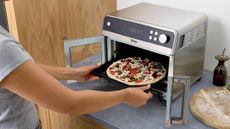
Ninja’s new French door air fryer could completely replace your oven
Ninja debuts first ever French door air fryer
By Bethan Morgan Published
